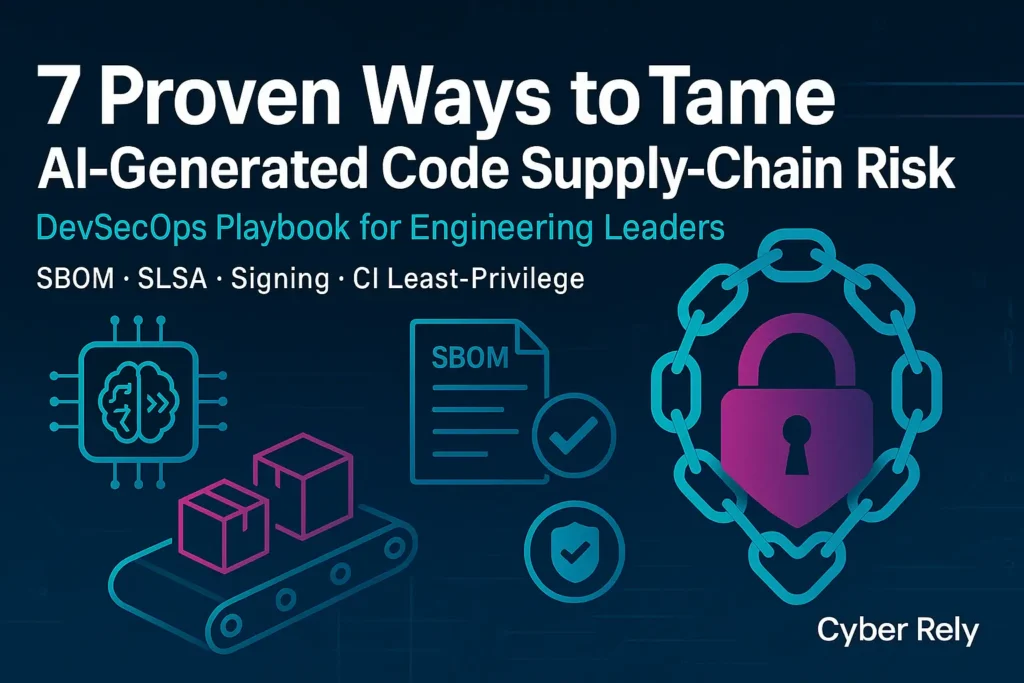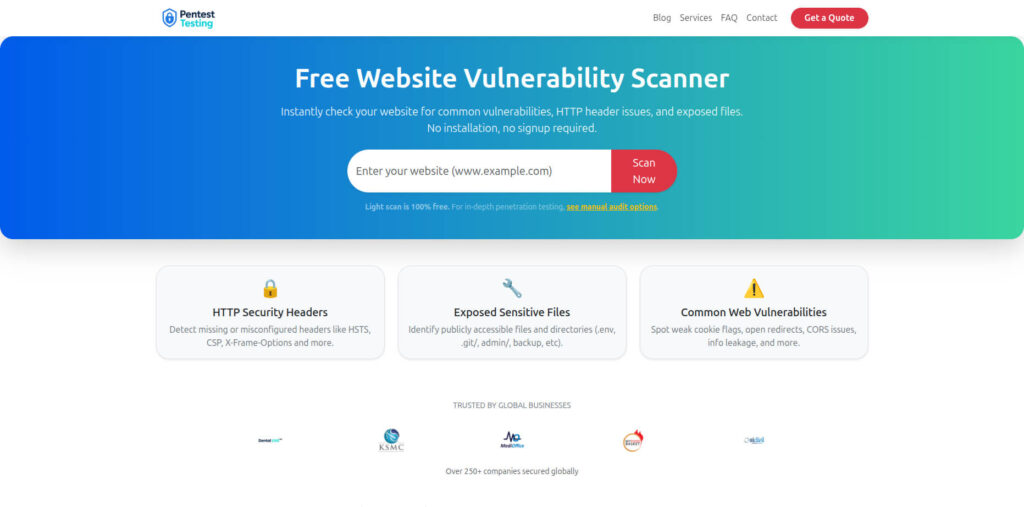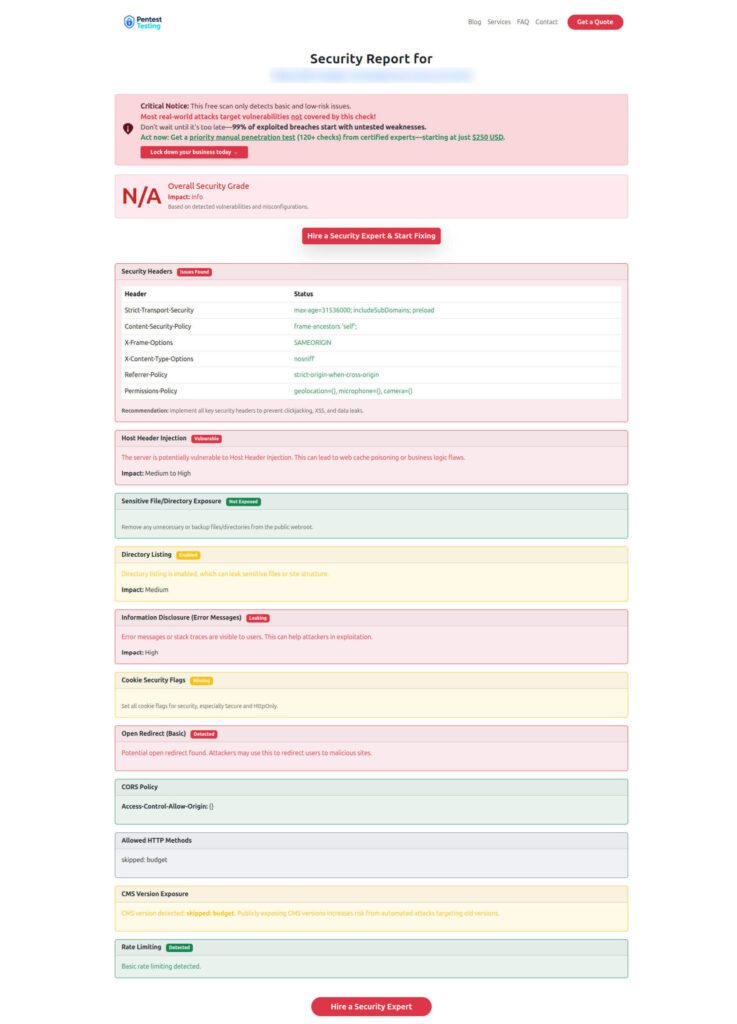7 Proven Ways to Tame AI-Generated Code Supply-Chain Risk
One-sentence angle: As developers and engineering teams increasingly lean on AI-generated code and open-source modules, the attack surface expands—this guide shows how to embed checks for AI-generated code supply chain risk and code provenance directly into modern pipelines.

New guide: Turn ASVS 5.0 into CI checks with GitHub Actions → ASVS 5.0 CI Gate.
Why this matters (trend & “why now”)
Generative AI has made it effortless to scaffold features and glue code in minutes. At the same time, malicious or compromised packages in public registries keep spiking, and recent npm/PyPI incidents show how fast supply-chain attacks jump from a single dependency into CI tokens and production artifacts. In short: you must treat AI-assisted development and package consumption as a supply-chain problem, not just a code review problem.
Risk vectors to actively manage
- AI-imported code without provenance (no origin, no integrity, no license clarity).
- Typosquatting & look-alike packages that land via auto-complete or AI suggestions.
- Dependency creep & transitive sprawl that drags in stale or malicious code.
- CI/CD compromise (over-privileged tokens, untrusted scripts, build-time exfiltration).
The 7 Proven Engineering Controls (with drop-in code)
Each control is designed to slot into an existing sprint/CI with minimal friction.
1) Pin & gate dependencies by default (lockfiles, hashes, and “no scripts” in CI)
Node (npm/pnpm)
// package.json — enforce one package manager & pin transitive deps
{
"packageManager": "[email protected]",
"overrides": {
"lodash": "4.17.21",
"minimist": "1.2.8"
},
"scripts": {
"safe:ci": "npm ci --ignore-scripts --audit-level=high"
}
}; .npmrc — safer CI defaults
engine-strict=true
ignore-scripts=true
fund=false
audit-level=high# GitHub Actions — use lockfile only, block lifecycle scripts
- name: Install (lockfile only)
run: npm ci --ignore-scripts --prefer-offlinePython (pip) with hash pinning
# requirements.txt (every line must include a hash)
urllib3==2.2.2 --hash=sha256:...
requests==2.32.3 --hash=sha256:...pip install --require-hashes -r requirements.txtWhy: Lockfiles + --ignore-scripts cut off install-time code execution; --require-hashes stops silent version drifts.
Our Free Website Vulnerability Scanner screenshot

2) Generate an SBOM on every build (and fail on unknowns)
Use Syft to produce a CycloneDX SBOM and keep it as an artifact:
syft packages . -o cyclonedx-json > sbom.jsonGate builds on SBOM policy (no “unknown” or banned packages):
jq '.components[] | .name + ":" + .version' sbom.json | grep -E "(left-pad|deprecated-lib)" && exit 1Upload sbom.json with your release—this is your living map of what shipped.
3) Add SLSA provenance to artifacts (attest what, when, how)
Provenance makes it tamper-evident how a build was produced.
# .github/workflows/build-provenance.yml
name: Build with SLSA
on: [push, workflow_dispatch]
jobs:
build:
permissions:
id-token: write # OIDC for signing
contents: read
runs-on: ubuntu-latest
steps:
- uses: actions/checkout@v4
- run: npm ci --ignore-scripts
- run: npm run build && tar -czf dist.tgz dist/
- name: Generate SLSA provenance
uses: slsa-framework/slsa-github-generator@v2
with:
base64-subjects: "$(sha256sum dist.tgz | awk '{print $1}')"Store the attestation alongside dist.tgz. Downstream stages verify before deploy.
4) Sign & verify artifacts with Sigstore Cosign (and make it a hard gate)
# Sign build output (keyless with OIDC, or use a key)
cosign sign-blob --yes dist.tgz > dist.tgz.sig
# Verify in deploy job — block if verification fails
cosign verify-blob --certificate-identity-regexp "github.com/.+/.+/.+" \
--insecure-ignore-tlog \
--signature dist.tgz.sig dist.tgzPolicy idea (Kubernetes admission): only run images signed by your org.
# Kyverno verify image signatures (example)
apiVersion: kyverno.io/v1
kind: ClusterPolicy
metadata:
name: require-signed-images
spec:
rules:
- name: verify-cosign
match:
any:
- resources:
kinds: ["Pod"]
verifyImages:
- imageReferences: ["ghcr.io/your-org/*"]
attestors:
- entries:
- keys:
secret:
name: cosign-public-key
namespace: security5) Hard-limit CI/CD blast radius (tokens, OIDC, network egress)
# GitHub Actions — minimal permissions + ephemeral OIDC (no long-lived PATs)
permissions:
contents: read
packages: write
id-token: write
# Example job-level egress block (self-hosted runners/iptables or GitHub’s egress controls)
- name: Restrict egress
run: |
sudo iptables -P OUTPUT DROP
sudo iptables -A OUTPUT -d registry.npmjs.org -j ACCEPT
sudo iptables -A OUTPUT -d sigstore.dev -j ACCEPTRotate short-lived tokens, scope package-publish to one repo, and deny post-install scripts in CI (--ignore-scripts).
6) Vet dependencies automatically (Scorecard + Dep Review + policy)
# Dependency review gate
- uses: actions/dependency-review-action@v4
with:
fail-on-severity: high
# OpenSSF Scorecard (supply-chain hygiene signals)
- uses: ossf/scorecard-action@v2
with:
results_file: scorecard.json
publish_results: falseAdd a simple policy check to block low-signal repos when AI suggests them:
# block-scorecard-under.sh
SCORE=$(jq '.score' scorecard.json)
[ "${SCORE:-0}" -lt 5 ] && echo "Low Scorecard signal — block" && exit 17) Catch typosquats before they land (fast similarity check)
// scripts/scan-typosquat.js
import levenshtein from "js-levenshtein";
import fs from "node:fs";
const allowList = ["express", "react", "lodash"];
const pkg = JSON.parse(fs.readFileSync("package.json", "utf8"));
const names = Object.keys({...pkg.dependencies, ...pkg.devDependencies});
for (const n of names) {
for (const a of allowList) {
if (levenshtein(n, a) === 1 || n.replace(/-/g,'') === a) {
console.error(`Possible typosquat: "${n}" looks like "${a}"`);
process.exit(1);
}
}
}# run in PR checks
- run: node scripts/scan-typosquat.jsSample report from our tool to check Website Vulnerability

DevSecOps integration (how to ship this without slowing sprints)
- Backlog & grooming (shift-left): add “Provenance present,” “SBOM attached,” and “Dependencies changed?” as acceptance criteria for epics that add new packages.
- PR template: require justification for each new dependency and link to its Scorecard/SBOM diff.
- Definition of Done: artifact signed, provenance verified, SBOM published, deploy gate green.
- Roles & collaboration:
- Eng Leads own the dependency allow-list, CI egress list, and token scopes.
- Security owns policies (what blocks builds) and monitors SBOM deltas.
- SRE owns runtime signature verification and image policy controllers.
48-hour rollout plan to Tame AI-Generated Code Supply Chain Risk
- Day 1: enable
npm ci --ignore-scripts, lock manager (packageManager), add SBOM generation, and turn on Dependency Review. - Day 2: add Cosign sign/verify gates, wire SLSA provenance, restrict egress to registries, and enforce minimal CI token scopes.
Where Cyber Rely can help next
- Risk mapping & policy design: Align your pipeline controls to real threats and compliance goals. See our blog for practical playbooks and recent incident guides.
- Hands-on hardening & fixes: If you need help implementing these controls end-to-end, our partner team delivers audit-ready outcomes:
- Risk Assessment Services — identify gaps and prioritize fixes tied to your SDLC.
- Remediation Services — implement control changes, produce evidence, and prove closure.
Recent Cyber Rely posts worth reading next
- npm supply chain attack 2025: ‘Shai-Hulud’ CI fixes — a developer-first IR checklist for npm worm campaigns. https://www.cybersrely.com/npm-supply-chain-attack-2025-shai-hulud-ci-fixes/
- Gate CI with CISA KEV JSON: Ship Safer Builds — turn KEV into a CI gate in ~10 minutes. https://www.cybersrely.com/gate-ci-with-cisa-kev-json-ship-safer-builds/
- 7 Proven Defenses for the Pixnapping Android Exploit — an example of fast, defense-in-depth guidance. https://www.cybersrely.com/blog/ (open the post from the blog list)
- CRLF Injection in TypeScript-based ERP: Best 7 Ways to Prevent It — practical hardening for TypeScript stacks. https://www.cybersrely.com/prevent-crlf-injection-in-typescript/
- Prevent LDAP Injection in React.js: Best 7 Ways — secure React + API auth flows. https://www.cybersrely.com/prevent-ldap-injection-in-react-js/
- How to Prevent XSS in RESTful APIs — sanitize and encode patterns with examples. https://www.cybersrely.com/how-to-prevent-xss-in-restful-apis/
Conclusion
Need a sprint-friendly rollout of these controls? Start with a quick Risk Assessment to map findings to CI policies, then let Remediation Services wire them into your pipelines with evidence that developers and auditors both accept. Try the Free Website Security Scanner to capture quick wins before backlog grooming.
🔐 Frequently Asked Questions (FAQs)
Find answers to commonly asked questions about AI-Generated Code Supply Chain Risk.